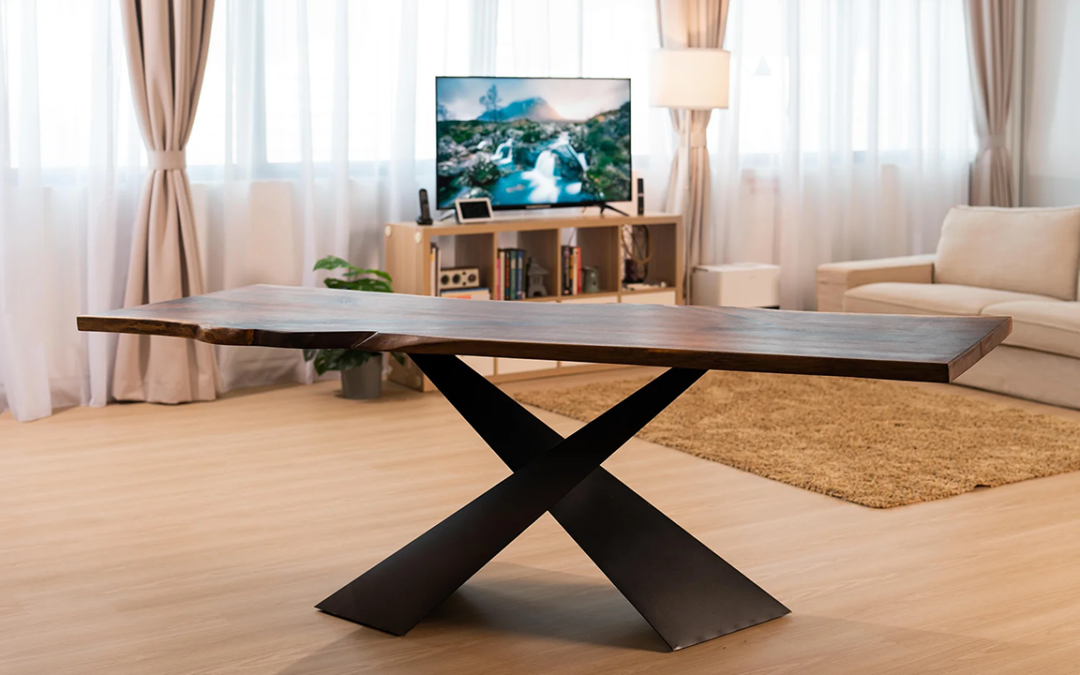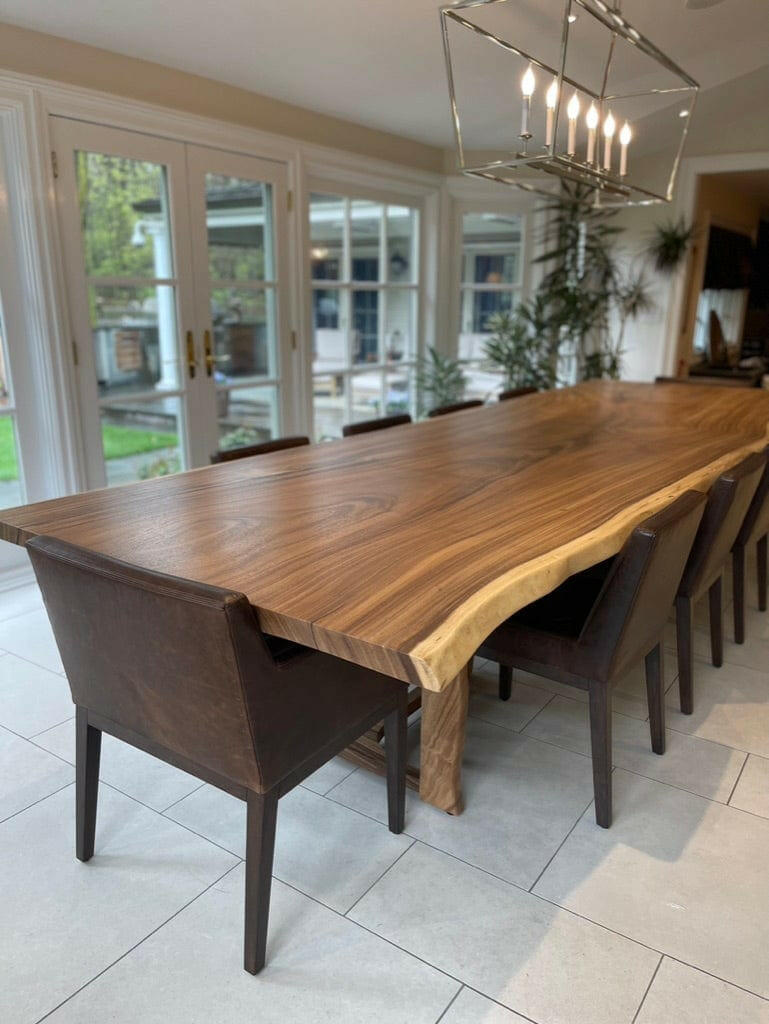Selecting the Perfect Table: What Styles Job Best for Your Home?
Selecting the ideal eating table for your home can be a nuanced process that stabilizes aesthetic appeals and functionality. Whether your room leans towards typical beauty, modern-day minimalism, rustic appeal, or commercial elegant, the variety of styles readily available can deal with varied tastes. Each style offers special benefits and difficulties that can either boost or disrupt your eating location's harmony. Recognizing how different products, shapes, and dimensions interact with your existing decoration is crucial. To navigate these selections efficiently and discover a table that absolutely complements your home, think about the adhering to aspects thoroughly.
Analyzing Your Space
Evaluating the dimensions and design of your eating location is a critical very first step in choosing the ideal table. Begin by determining the size and size of the area, making up entrances, home windows, and various other building attributes that can influence table placement. This makes certain that your table not only fits but also enables for comfy motion around it.
Think about the variety of people you generally captivate. A table ought to fit your home's everyday needs while offering sufficient flexibility for periodic visitors. As a regulation of thumb, allot a minimum of 24 inches of table width per person to guarantee a comfortable eating experience.
It's additionally vital to preserve suitable clearance around the table. Ideally, there should go to least 36 inches between the table side and wall surfaces or other furniture, making it possible for very easy gain access to and movement. For rooms where chairs with arms or added storage units like buffets are entailed, boosting this clearance to 48 inches is recommended.
Lighting and ambience play considerable roles too. Ensure that your eating table lines up with existing lights components or plan for ample illumination solutions. This detailed spatial assessment warranties that your table not just fits physically yet likewise integrates with your space's total performance and visual.
Popular Table Styles

Standard eating tables commonly feature ornate details, bent legs, and abundant timber surfaces, evoking a feeling of classic sophistication. They are best for homes with traditional design or those looking to include a touch of refinement to their eating area.
Modern dining tables focus on simplicity and clean lines, often including materials like glass and metal. These tables are suitable for contemporary spaces, giving a streamlined and clean look that enhances minimalist design ideologies.
Rustic table, on the other hand, stress natural products and a handcrafted look - dining room table legs. They typically feature reclaimed timber and a distressed coating, producing a warm and welcoming environment. These tables function well in farmhouse-style homes or those seeking a comfy, organic feeling
Industrial dining tables incorporate resources such as steel and wood, often showcasing a practical aesthetic. This design is well-suited for lofts or city areas, including a touch of tough beauty and sturdiness to the dining experience.
Each style supplies unique benefits, making it vital to pick one that lines up with your home's total design and your individual choices.
Material Options
When selecting a table, the selection of material plays a vital role in identifying both the table's aesthetics and performance. Timber, steel, glass, and composite materials each offer one-of-a-kind benefits and difficulties, making it imperative to line up the product with your home's style and lifestyle requirements.
Timber is a classic and versatile option, offered in selections such as oak, walnut, and mahogany. Recognized for its resilience and warmth, timber enhances both typical and contemporary interiors. Nevertheless, it needs routine upkeep to avoid scrapes and warping.
Metal tables, my sources commonly crafted from stainless-steel, light weight aluminum, or functioned iron, are commended for their modern-day allure and effectiveness. They are particularly suited for commercial or minimal setups yet can be vulnerable to damages and might really feel cool to the touch.
Glass eating tables bring an air of sophistication and visibility, suitable for smaller areas as they create an illusion of more area. While very easy to tidy, glass can be at risk to spots and needs cautious dealing with to avoid chips and cracks.
Composite materials, such as MDF and plywood, deal cost-efficient and personalized options, though they may lack the long life of all-natural materials. Selecting the right product guarantees your table is both a functional asset and an aesthetic pleasure.
Shape and Dimension Factors To Consider
After figuring out the suitable material for your eating table, the next factor to consider is choosing the right form and size to suit your room. The form of the table considerably influences the room's aesthetic and capability. Rectangle-shaped tables, the most common form, are suitable for larger rooms and can fit a higher variety of guests. They additionally permit a more official dining experience. Conversely, rounded tables foster a feeling of intimacy and are superb for smaller eating areas, urging conversation by removing corners and making every person feel just as included.
As a policy of thumb, allocate at least 24 inches of table width per person to ensure comfy eating. In addition, take into consideration the table's clearance room: there need to be at the very least 36 inches in between the table edge and the walls or other furniture. Expanding tables supply adaptability if you regularly hold larger gatherings, providing additional seats when required without occupying extra additional resources space daily.
Matching Your Design
Picking a dining table that integrates with your existing decor is essential in creating a cohesive and welcoming space. A smooth, minimal table with clean lines is optimal for a modern-day home, while a vintage, ornate table fits an extra conventional setup.
Shade and material are similarly substantial. If your decor features warm tones and all-natural products, consider a wooden table to boost the organic feel. On the other hand, a glass or steel table might be much more proper in a room dominated by awesome shades and commercial components. Take note of the finish, as it needs to mirror link various other furniture and fixtures to preserve harmony.
A rough-hewn, redeemed timber table can add character to a rustic area, while a refined marble surface area can raise a glamorous eating location. A well-matched eating table not just improves aesthetic allure yet also enhances the overall dining experience.

Verdict
Choosing the ideal dining table necessitates cautious consideration of area, style, products, form, and dimension. Conventional tables enhance timeless insides with abundant wood surfaces, while modern tables fit modern settings through glass and metal.